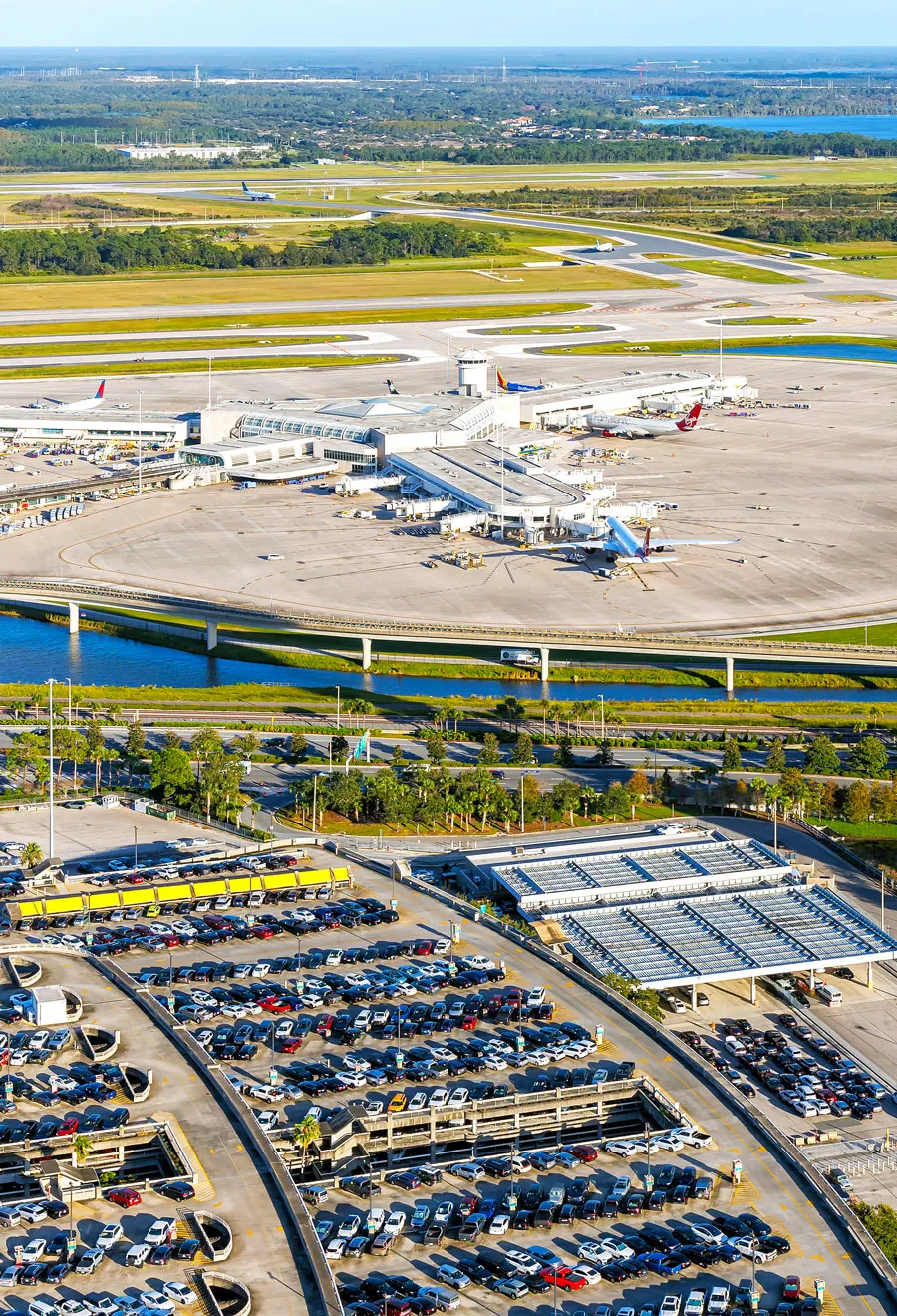The IATA (International Air Transport Authority) issues codes to identify airports around the world, a practice that dates back to the 1930s. These three-letter identifiers are visible everywhere from booking platforms to baggage tags and boarding passes. Usually, airport codes are pretty straightforward — it’s pretty easy to guess, for example, that SLC refers to Salt Lake City International Airport or that DEN is assigned to Denver International Airport. But others may leave you scratching your head. How, exactly, did they come up with MCO for Orlando International Airport, for instance? Here’s how 10 famous airport codes in North America came to exist.
Chicago O’Hare International Airport – ORD
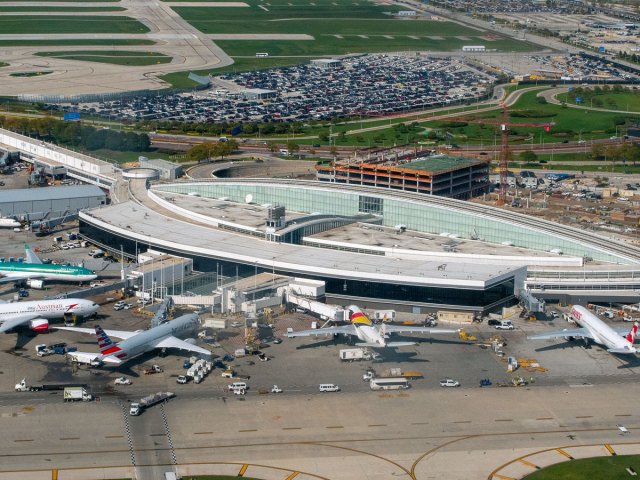
Chicago’s O’Hare International Airport was built on the site of Orchard Field, home to a former Douglas aircraft assembly plant. Its ORD code comes from the letters in the word “orchard.” The airport kept that designation even after the airport was renamed in 1949 for Edward “Butch” O’Hare, a World War II naval aviator. O’Hare has always been a busy hub; by 1962, it had already claimed the title of the world’s busiest airport.
These days, it is the world’s eighth-busiest airport, handling 80 million passengers in 2024. To manage all that traffic, the airport currently has eight runways in operation — more than any other airport in the world — with more than 74,000 square feet of asphalt and concrete. The airport is capable of quadruple parallel landings, meaning four aircraft can land at the same time.
Los Angeles International Airport – LAX
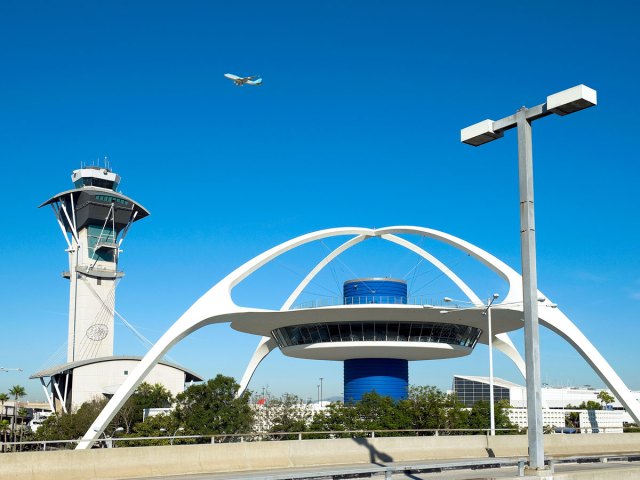
There are many airport codes around the world that end with the letter “X,” but usually this doesn’t stand for anything. Before the 1930s, airports used two-letter National Weather System (NWS) city codes based on the weather station at the airport. As the aviation industry took off, airports switched to the three-letter IATA system. In many cases, the letter “X” was added as an arbitrary letter to the end of existing two-letter codes. Los Angeles International Airport, for example, went from LA to LAX. The same can be said for Portland International Airport (PDX).
Toronto Pearson International Airport – YYZ
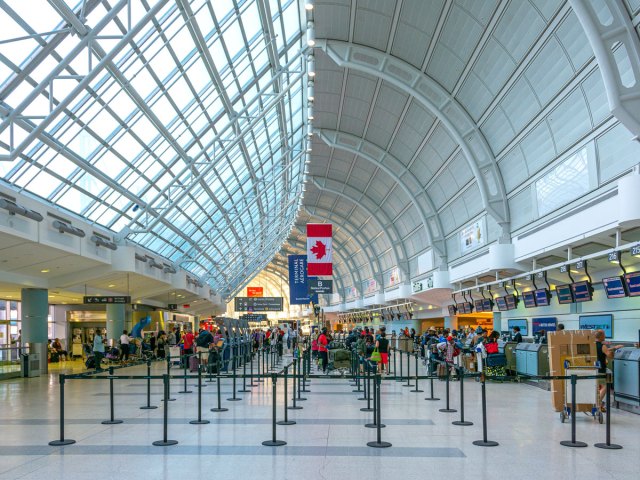
Ever booked flights to Vancouver (YVR), Ottawa (YOW), or Montreal (YUL)? You may notice a pattern: All Canadian airport codes begin with the letter “Y.” Similar to the story of LAX, the “Y” was added to existing two-letter codes used before the 1930s. However, in this case, “Y” was added to specify if the airport had a weather station or radio tower on site, with “Y” standing for “yes.”
As three-letter codes became the norm worldwide in the 1940s, Canada continued to assign a “Y” at the beginning of its airport codes, as most of its airports were already using the naming convention by that time. Canada remains the only major country to assign its IATA codes all with the same first letter.
The country’s busiest airport is Toronto Pearson International Airport, which is assigned the code YYZ. While the first “Y” follows the naming convention of all Canadian airports, the second part (“YZ”) dates back to the two-letter identifier used by the Canadian National Railway for a station in Malton, Ontario, the site on which Pearson Airport was built. The airport is named after Lester B. Pearson, who served as the 14th prime minister of Canada from 1963 to 1968.
John F. Kennedy International Airport – JFK
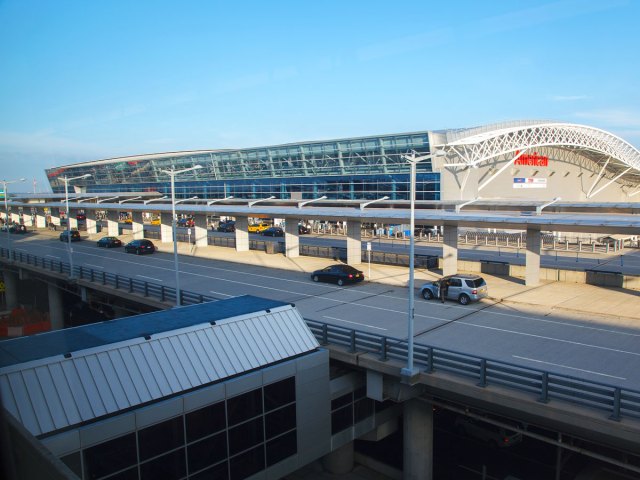
In 1964, the Federal Aviation Administration (FAA) and IATA performed a rare airport code swap for one of New York City’s airports. Formerly known as Idlewild (IDL), the airport was renamed after the late President John F. Kennedy in late 1963 and was assigned the new code JFK the following year. At that time, the letter “J” had previously been reserved for heliports, but officials decided that the code JFK was simply the logical choice.
New York’s JFK Airport is now one of the world’s busiest international airports, but before it was named after the 35th president, the airport went by a more obscure name. In the 1940s, nearby LaGuardia Airport was already reaching capacity, and plans began for development of a new international airport along Jamaica Bay in Queens, in an area known as Idlewild — named after a golf course that the airport later displaced.
When the airport opened in 1948, it was officially named New York International Airport, Anderson Field, to commemorate Major General John B. Anderson, a significant public figure from Queens who had recently passed away. But most people continued to refer to the airport as Idlewild until 1963, when it was renamed to honor John F. Kennedy after his assassination.
Louis Armstrong New Orleans International Airport – MSY
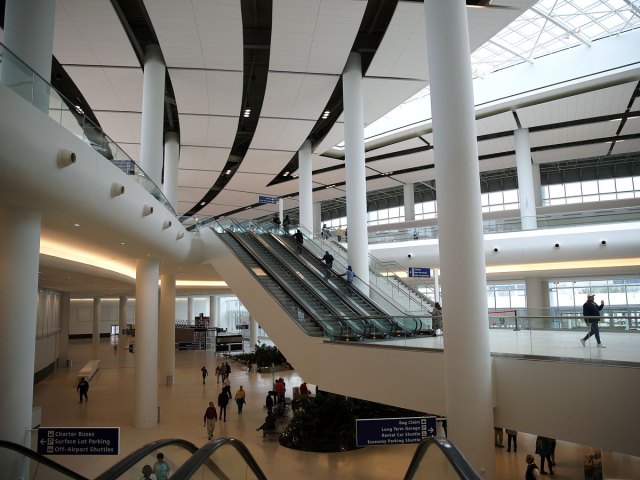
Louis Armstrong was one of the most influential musicians in the history of jazz, so it makes sense that New Orleans — the birthplace of jazz, as well as Armstrong’s hometown — would choose to honor him. In 2001, the city renamed its airport Louis Armstrong New Orleans International Airport, in honor of the 100th anniversary of the jazz legend’s birth.
Prior to that, it was called New Orleans International Airport, but originally it was Moisant Field, named after John Moisant, a daredevil pilot who died in a plane crash at the site in 1910. And before the airport opened in 1946, the site was called Moisant Stock Yard, which is where the letters of its IATA code come from.
Orlando International Airport – MCO
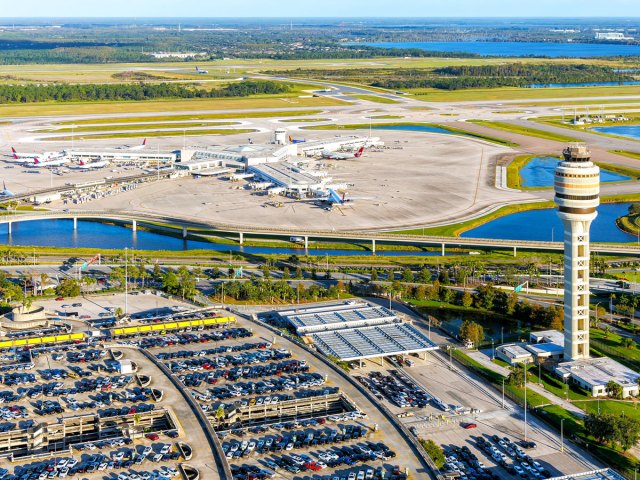
While most airport codes in the U.S. are an abbreviated version of the city’s name — for example, MIA for Miami — that isn’t the case for Orlando. The city’s airport was built on the site of a former military base dating back to the 1940s. In 1958, the site was renamed McCoy Air Force Base, after Colonel Michael McCoy, who was killed during a bombing competition the previous year. When the base was decommissioned in the 1970s, the current airport opened in 1975 and kept the MCO code. (Some Orlandoans, however, like to joke that it actually stands for “Mickey’s Corporate Office.”)
Kansas City International Airport – MCI
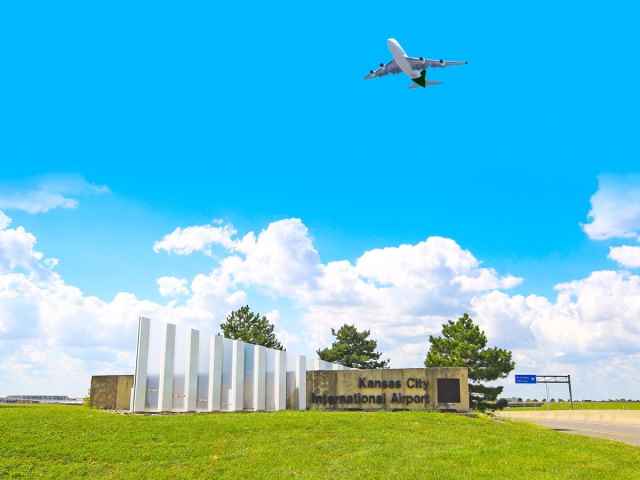
You may be wondering why Kansas City’s airport code isn’t simply KCI — where did that “M” come from? Like many airports on this list, it comes from the previous name of the airfield where the modern airport was built. In KC’s case, that site was called Mid-Continent Airport, which explains the three-letter IATA code. Trans World Airlines, now defunct, used the airport as a maintenance base until the city’s main airport ran out of room to expand, and operations were moved across town. The previous code stuck, in part, because “K” was reserved for radio call sign prefixes.
Interestingly, while the three-letter IATA codes are more commonly known, there are also four-letter codes assigned by the ICAO (International Civil Aviation Organization). These codes are primarily used by air traffic controllers, and all ICAO airport codes in the contiguous U.S. start with the letter “K.” So, in another sense, Kansas City’s airport does have the “K” after all (KMCI).
Nashville International Airport – BNA
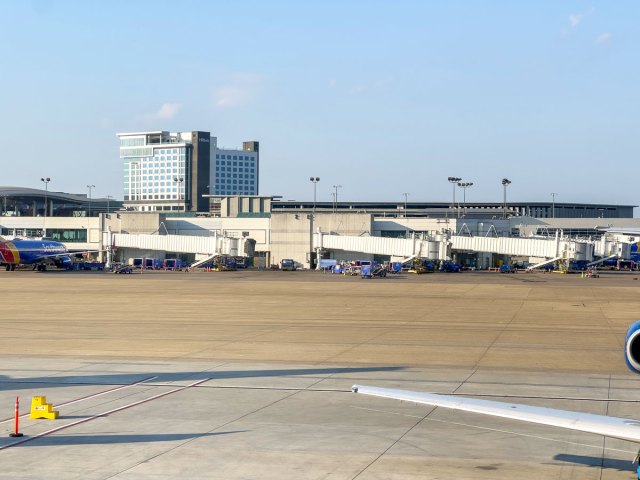
Nashville’s BNA moniker comes from the airport’s early days as Berry Field, which opened in 1937. The “B” stands for “Berry,” while the “N” and “A” stand for “Nashville.” The airport’s namesake, Colonel Harry S. Berry, was a U.S. Army veteran of World War I who helped champion the new airport.
Another reason why you fly into BNA instead of NAS — aside from the fact that NAS is reserved for Nassau’s airport in the Bahamas — is that, during the early days of airport codes, the U.S. Navy reserved “N” as the first letter for naval bases. NPA, for example, is the Navy training airport in Pensacola, Florida. This has caused some other airports to settle for less-than-ideal codes — for instance, EWR for Newark International Airport.
Cincinnati/Northern Kentucky International Airport – CVG
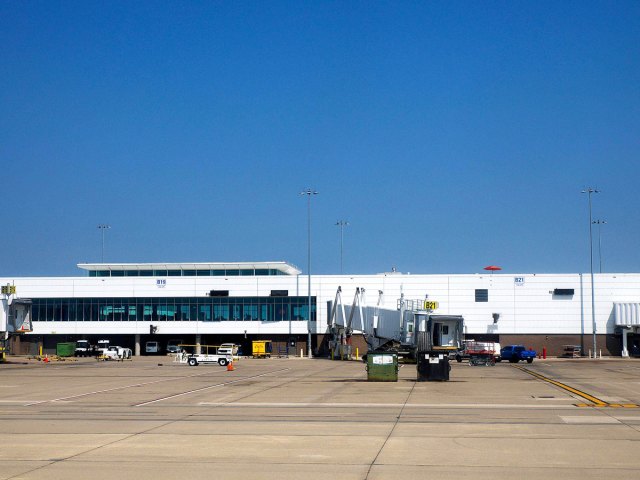
When many people fly into Cincinnati, they assume they’ll be landing in Ohio. Wrong. The airport serving Ohio’s third-largest city is actually located right across the border in Kentucky, which is reflected in the airport’s official name: Cincinnati/Northern Kentucky International Airport.
But that still doesn’t explain where the CVG code comes from. To find out, we’ll need to look back to the 1940s, when the airport was originally built as a military airfield and named after the nearest major city at the time, Covington — hence the IATA code we still use today. (If you’re wondering why it hasn’t been reassigned CIN, that code is already taken by another airport in Iowa.)
Washington Dulles International Airport – IAD
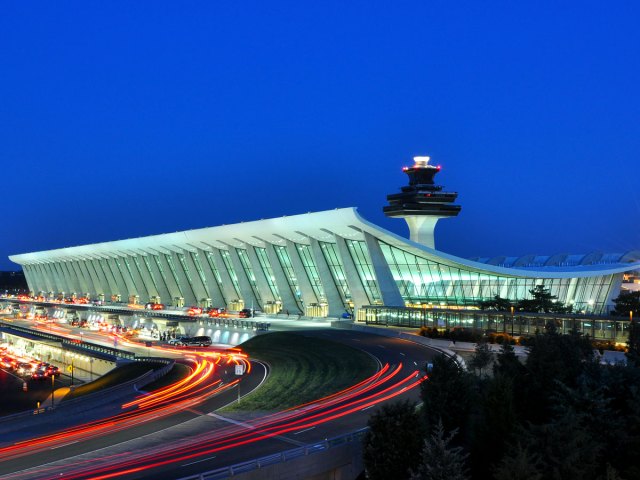
Dulles Airport is named after the late U.S. Secretary of State John Foster Dulles, who served in the role from 1953 to 1959. The airport was built to accommodate booming growth in the D.C. area after World War II and to relieve congestion at National Airport, closer to downtown. When the airport first opened in 1962, it was assigned the three-letter code DIA. However, the FAA changed this to IAD in 1968 to avoid confusion with nearby National Airport, which had a one-letter difference in its DCA code. The FAA simply rearranged the letters, which is how we ended up with IAD.
More from our network
Daily Passport is part of Inbox Studio, which publishes content that uplifts, informs, and inspires.






